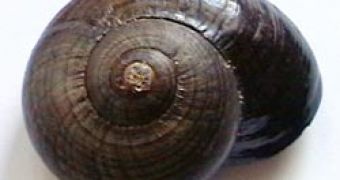Eight hundred large carnivorous snails died in a fridge from the Department of Conservation, proving that what doesn't kill you, sometimes also fails to make you stronger. After they were rescued from their initial habitat, threatened by mining activities, the endangered large snails (Powelliphanta augusta) were kept in a fridge from the Department of Conservation.
Everything went according to plan, until the temperatures suddenly decreased to zero degrees Celsius, making the snails freeze to death.
In 2007, 6,000 Powelliphantia snails were rescued from Stockton Plateau, which became a dangerous location after Solid Energy started its coal mining operations in the area.
Animal groups had been paying close attention to this particular species since 1996, when biologists first discovered it. All the efforts that went into the rescue operation were annihilated, in a matter of hours, by a malfunctioning fridge.
The staff didn't notice the problem until it was too late. Despite the fact that these creatures have the ability to endure low temperatures for a short period of time, their adaptability didn't help them preserve their lives.
"The temperature probe […] measured the temperature incorrectly. It said it was really hot in the container so it sent a message to the chiller unit to cool the unit down," Jose Watson says in a statement for The Press.
Ironically, after the giant snails were removed from the 5 hectares on the top of Mt. Augustus affected by mining operations, they died in an institution that was supposed to shelter and protect them. Animal groups and non-profit organizations will have to take this matter into their own hands and try to change the fate of the molluscs still in the area.
The balance of the entire population is threatened and the New Zealand government is aware of this fact, since it has listed these creatures as Nationally Critical.
According to experts in this field of activity, the catastrophe could have been easily avoided. Furthermore, the incident has the potential to affect the fate of the carnivorous snails population, due to the fact that they have a low breeding rate and those left in the wild might not be able to replace the lost creatures in time.

 14 DAY TRIAL //
14 DAY TRIAL //